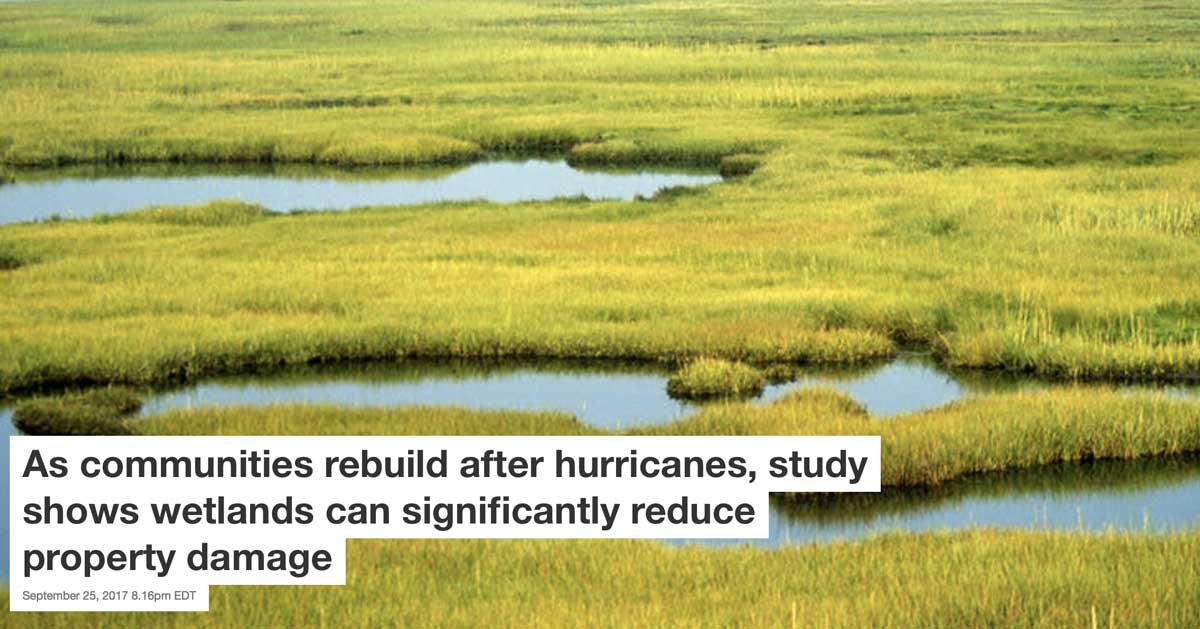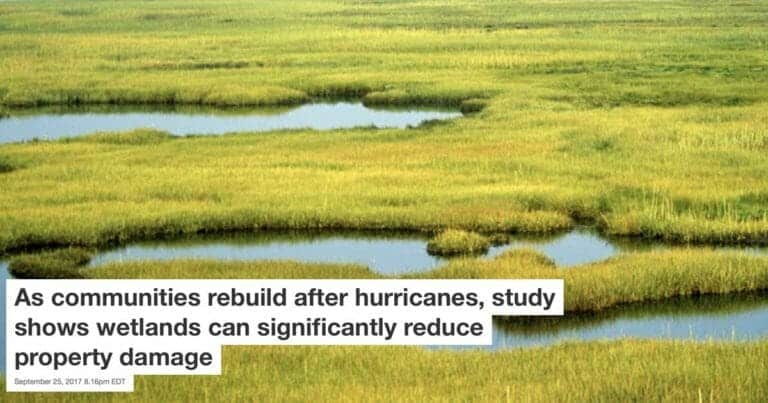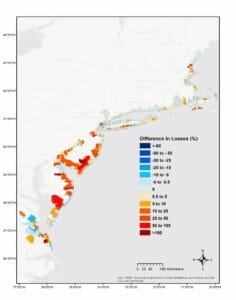Coastal wetlands are an effective first line of defense and act by slowing down storm surges and reducing flooding. Kelly Fike/USFWS, CC BY
A 12-year “hurricane drought” during which no major hurricanes formed in the Atlantic ended dramatically in 2017. The devastating impacts of Harvey, Irma, Jose and Maria across the United States and the Caribbean provide tragic reminders of the catastrophic risks we face on our coasts.
Coastlines are being developed rapidly and intensely in the United States and worldwide. The population of central and south Florida, for example, has grown by six million since 1990. Many of these cities and towns face the brunt of damage from hurricanes and are looking for better and cheaper ways to reduce their risks. Yet this rapid coastal development is destroying natural ecosystems like marshes, mangroves and coral reefs – resources that help protect us from catastrophes.
https://vimeo.com/188757883
In a new and unique partnership funded by Lloyd’s of London, we worked with colleagues in academia, environmental organizations and the insurance industry to calculate the financial benefits that coastal wetlands provide by reducing storm surge damages from hurricanes. Our recently published study found that this function is enormously valuable. It offers new evidence that protecting natural ecosystems is a cost-effective way to reduce risks from coastal storms and flooding. Coastal wetlands and […]
Wetland benefits for flood damage reduction during Sandy (redder areas benefited more from having wetlands). Narayan et al., Nature Scientific Reports 7, 9463 (2017)., CC BY
Full article: As communities rebuild after hurricanes, study shows wetlands can significantly reduce property damage
More about Hurricane Harvey and Storm Damage:
As Feds Weaken Wetlands Rules, Locals Eye Greater Protections For Otter Creek Swamps
Girl Power Helping After Hurricane Harvey
In Harvey’s wake, Congress advances legislation speeding Army Corps projects in Texas
Private water wells in Texas test positive for contamination after Harvey
Houston area copes with flooding as Harvey delivers pounding rainfall




